Dark spots on the neck and under the breasts are more common than many people realize, and they can become a source of discomfort, embarrassment, or distress. These hyperpigmented areas often develop due to friction, hormonal fluctuations, insulin resistance, sun exposure, and certain dermatological or systemic conditions. Although they are generally benign, dark patches in these regions can signal underlying health concerns or skin sensitivity that deserves attention. For those wondering how to get rid of dark spots on the neck or how to get rid of dark spots under the breasts, it’s important to explore the full spectrum of medical, dermatological, and lifestyle-based strategies available. This article provides an in-depth, evidence-backed guide to understanding, addressing, and preventing discoloration in these sensitive areas through a combination of professional treatments and at-home solutions.
You may also like: How to Choose Skin Care for Fine Lines: Evidence-Based Tips for Healthier, Younger-Looking Skin
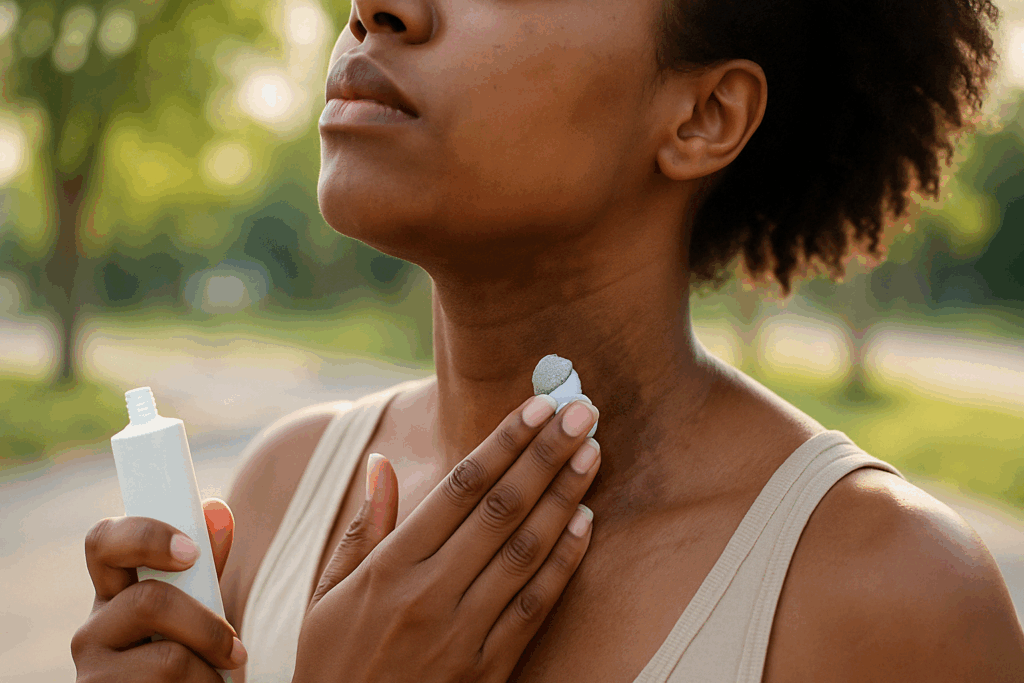
Understanding Why Dark Spots Develop in These Areas
To know how to remove dark spots on the neck or under the breasts, it’s essential to first understand what causes them. Hyperpigmentation in these regions is often linked to a condition called acanthosis nigricans, which presents as velvety, darker skin and is frequently associated with insulin resistance, obesity, or hormonal imbalances. In many cases, this condition is one of the first external signs that metabolic dysfunction may be present, and treating the underlying metabolic issue can help fade the skin discoloration.
Beyond acanthosis nigricans, chronic friction from tight clothing or skin-on-skin contact can trigger post-inflammatory hyperpigmentation. This occurs when repeated irritation causes inflammation, leading to melanin overproduction during the healing process. The neck and inframammary areas are also vulnerable to fungal infections and intertrigo—skin inflammation caused by trapped moisture and heat—which can leave residual pigmentation after resolution. Furthermore, certain medications, such as oral contraceptives or chemotherapy drugs, can disrupt melanin regulation, making it harder for the skin to return to its original tone.
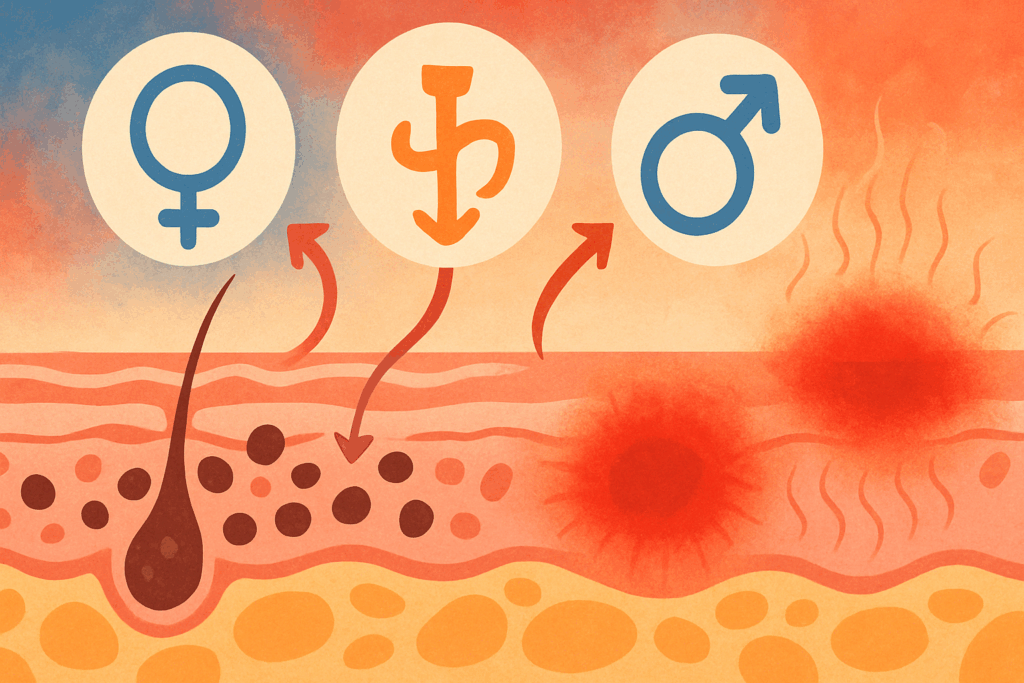
The Role of Hormones, Insulin Resistance, and Inflammation
Hormonal fluctuations, particularly during pregnancy or menopause, can significantly influence melanin distribution. Estrogen and progesterone receptors in the skin can affect pigment production, and elevated levels of these hormones can trigger dark patches, particularly in people predisposed to melasma or other pigment disorders. In cases where dark spots under the breasts or on the neck are accompanied by other symptoms of hormonal imbalance—such as irregular periods, hair growth changes, or weight gain—a medical evaluation may be warranted.
Insulin resistance is another common culprit, especially in cases where darkened skin appears suddenly and is resistant to lightening efforts. High insulin levels can stimulate melanocyte activity and epidermal thickening, both of which contribute to the darker, thicker skin appearance seen in the neck folds and under the breasts. Managing blood sugar through diet, physical activity, and potentially medications like metformin may not only improve overall health but also help resolve the skin discoloration over time. Chronic low-grade inflammation, often a result of obesity, sedentary lifestyle, or poor diet, may also impair skin healing and contribute to the persistence of pigmentation.
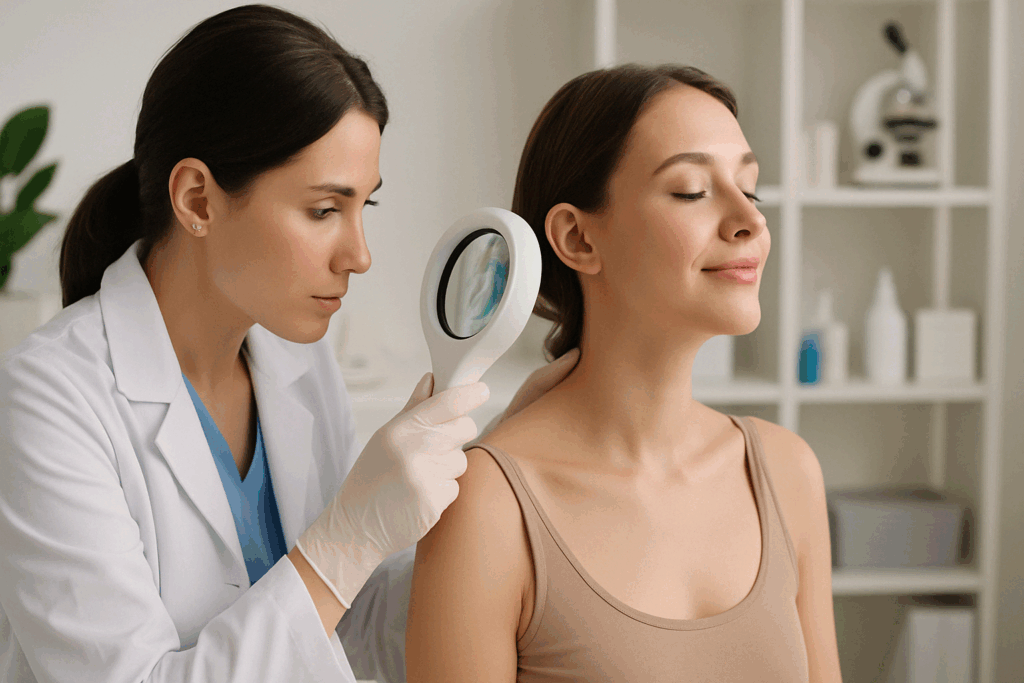
How to Get Rid of Dark Spots on Neck: Dermatologist-Recommended Treatments
For individuals seeking guidance on how to get rid of dark spots on neck areas, dermatologists often recommend a tailored approach that begins with skin barrier repair and gentle exfoliation. Prescription-strength topical treatments, including hydroquinone, tretinoin, or a combination of both, are often considered first-line therapies. Hydroquinone works by inhibiting tyrosinase, the enzyme responsible for melanin production, while tretinoin accelerates cellular turnover, helping to shed hyperpigmented layers.
Chemical peels using glycolic acid, salicylic acid, or lactic acid can be administered in clinical settings to reduce pigmentation and smooth out texture. These acids remove the upper layers of dead skin and can significantly brighten the neck area after multiple sessions. Laser therapies, including fractional laser and Q-switched Nd:YAG, can target deeper pigment without damaging surrounding tissue. These options are particularly beneficial for more stubborn or long-standing dark patches.
Importantly, dermatological care must always consider the sensitivity of the neck area. Aggressive treatments can lead to irritation, which paradoxically may worsen hyperpigmentation through post-inflammatory responses. As such, professional guidance is essential when determining how to remove dark spots on neck skin safely and effectively.
How to Get Rid of Dark Spots Under Breasts: A Targeted Skin Health Approach
The inframammary fold, or the area under the breasts, is prone to moisture retention, friction, and microbial overgrowth—all of which can contribute to skin discoloration. Individuals searching for how to get rid of dark spots under breasts should begin with a thorough evaluation of their daily habits, including hygiene practices, clothing choices, and skincare products. Using breathable fabrics and ensuring proper skin drying after bathing can help reduce the risk of recurring irritation and pigment formation.
Topical antifungal or antibacterial creams may be necessary if darkening follows a history of rash, itching, or inflammation. In such cases, treatment should first target any underlying infection or dermatitis before introducing lightening agents. Non-comedogenic barrier creams with zinc oxide can help protect the area while the skin heals. Once the inflammation is under control, agents like niacinamide, kojic acid, or alpha arbutin can be introduced to gently lighten residual hyperpigmentation.
Given the delicate and often occluded nature of the under-breast skin, non-irritating formulas are crucial. Overly harsh or fragranced products can compromise the skin barrier and lead to worsening symptoms. Consulting a dermatologist for a customized regimen can make a significant difference in both the safety and speed of results. Furthermore, regular follow-ups can ensure that any recurrence is addressed early.
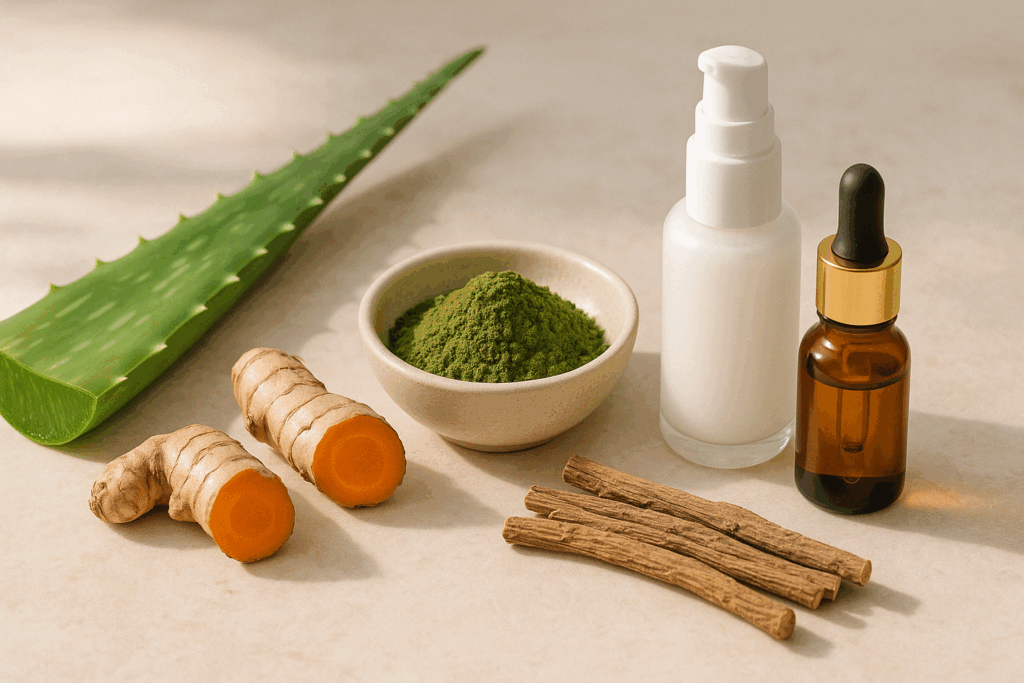
Natural and At-Home Remedies for Pigment Reduction
While clinical treatments offer powerful results, many people prefer to explore gentler, at-home methods when learning how to get rid of dark spots on neck and breast areas. Natural lightening agents such as aloe vera, licorice extract, turmeric, and green tea polyphenols have demonstrated varying degrees of efficacy in reducing pigmentation. These ingredients typically work by calming inflammation, inhibiting melanin synthesis, or accelerating skin cell renewal.
Aloe vera gel, in particular, is well tolerated and may be used daily to soothe and hydrate the skin while promoting repair. Licorice extract contains glabridin, a compound known to inhibit tyrosinase activity, and is found in many over-the-counter brightening serums. Turmeric, traditionally used in Ayurvedic medicine, contains curcumin—a compound with anti-inflammatory and depigmenting properties. When used consistently, these ingredients can help soften the appearance of dark spots without the risk of irritation associated with stronger agents.
However, patience is required with natural remedies, as results tend to manifest more gradually. Additionally, it’s important to perform a patch test before trying any new product to minimize the risk of allergic reactions. Though these options are generally safer for sensitive skin, their effectiveness may be limited compared to medical-grade interventions, particularly for darker, more entrenched patches.
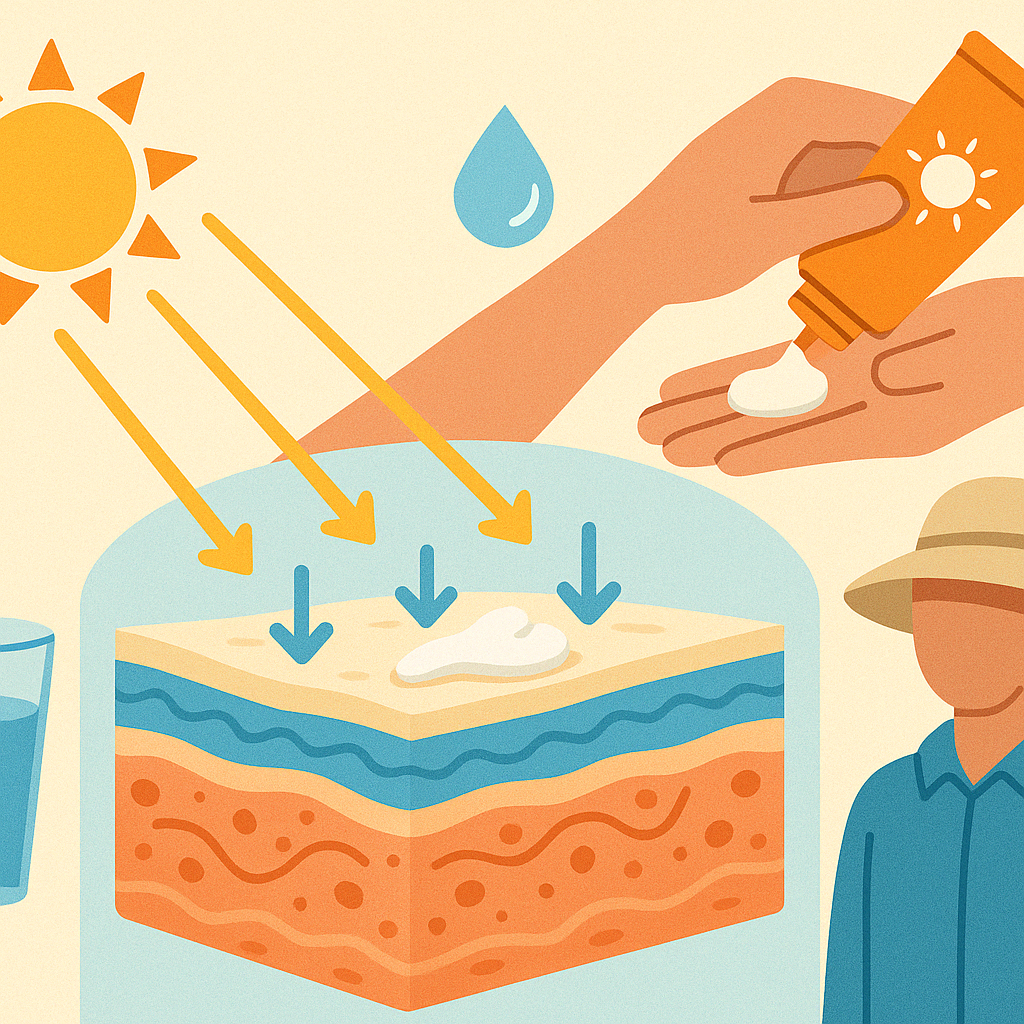
The Importance of Sun Protection and Skin Barrier Health
Any effort to lighten darkened skin must include sun protection as a cornerstone. Even areas that are not directly exposed to sunlight, such as the neck or under the breasts, can be affected by UV rays through indirect exposure or ambient light. Ultraviolet radiation stimulates melanin production and can worsen existing pigmentation, making sunscreen application a non-negotiable part of any regimen.
For those focused on how to remove dark spots on neck skin, broad-spectrum sunscreen with at least SPF 30 should be applied daily and reapplied as needed, especially if the area is uncovered. Physical sunscreens containing zinc oxide or titanium dioxide are often recommended for sensitive skin and provide effective protection without chemical irritation. Additionally, wearing protective clothing, such as high-necked tops or UV-protective bras, can help shield these areas from cumulative sun damage.
Maintaining the skin’s barrier function is equally important. Using a gentle cleanser, avoiding over-exfoliation, and moisturizing with ceramide-rich or hyaluronic acid-based products can support overall skin resilience. When the barrier is compromised, the skin becomes more susceptible to inflammation and hyperpigmentation. Thus, barrier repair should be viewed not as an optional step but as a foundational element of pigment correction therapy.
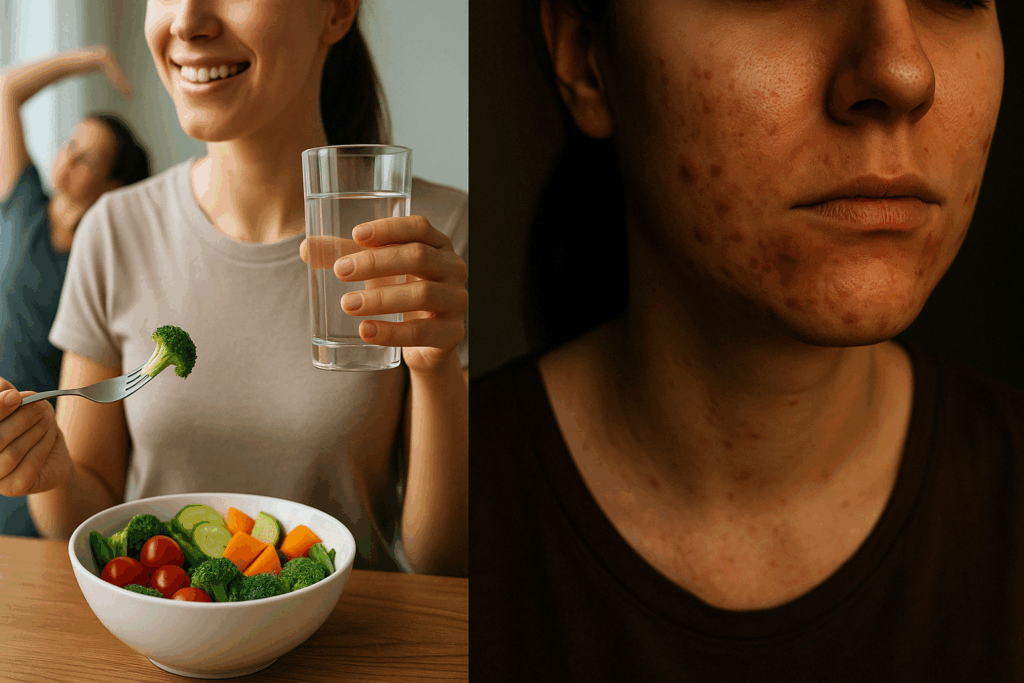
How Lifestyle Choices and Systemic Health Affect Pigmentation
The relationship between skin health and overall wellness is deeply interconnected. For individuals exploring how to get rid of dark spots under breasts or on the neck, addressing systemic factors such as diet, hydration, sleep, and stress management can amplify treatment outcomes. Diets high in sugar and processed foods may contribute to inflammation and insulin resistance, both of which are linked to hyperpigmentation. Incorporating antioxidant-rich foods, including leafy greens, berries, and fatty fish, can support skin repair and reduce oxidative stress.
Hydration also plays a pivotal role. Proper water intake helps maintain skin elasticity, supports detoxification, and facilitates cellular turnover. Similarly, consistent sleep patterns promote hormonal balance and allow the skin to regenerate. Chronic stress, on the other hand, elevates cortisol levels, which can disrupt skin function and exacerbate pigment irregularities.
For those managing underlying conditions such as polycystic ovarian syndrome (PCOS), diabetes, or thyroid dysfunction, medical treatment of the root cause is essential. Topical creams and lifestyle modifications may provide limited results unless hormonal and metabolic imbalances are corrected. Working with a multidisciplinary team that includes dermatologists, endocrinologists, and dietitians can provide a more holistic and sustainable approach.
When to Seek Professional Evaluation for Pigmented Lesions
Not all dark spots are benign. While many cases of neck or under-breast hyperpigmentation are harmless, sudden changes in skin color, texture, or the appearance of new lesions warrant medical evaluation. Features such as rapid growth, irregular borders, bleeding, or itching may indicate malignancy or precancerous changes and should not be ignored. Dermatologists can perform dermatoscopic analysis or biopsy if there is any concern about atypical pigmentation.
Persistent or resistant pigmentation, even when benign, may benefit from a comprehensive diagnostic workup. Blood tests to assess insulin sensitivity, thyroid function, and hormone levels can uncover hidden contributors to skin discoloration. Imaging or skin swabs may also be needed if recurrent infections are suspected. By identifying and addressing the root cause, treatment can become more targeted and effective.
The Emotional and Psychological Impact of Visible Discoloration
Skin is not only the body’s largest organ but also a deeply visible expression of health, identity, and confidence. For individuals struggling with persistent hyperpigmentation, the psychological burden can be significant. Feelings of embarrassment, lowered self-esteem, and social anxiety are not uncommon—especially when discoloration appears in intimate or prominently visible areas. This emotional distress is often compounded by the frustration of trying multiple remedies without noticeable improvement.
For those asking how to remove dark spots on neck or under-breast skin, compassionate care must address both physical and psychological well-being. Mental health support, including counseling or support groups, can provide a space to process these challenges. Additionally, education about the condition and realistic expectations about treatment timelines can reduce anxiety and empower individuals to remain consistent with their skin care regimen.
Frequently Asked Questions: How to Get Rid of Dark Spots on the Neck and Under the Breasts
1. Can wearing jewelry or perfume contribute to dark spots on the neck?
Yes, certain metals in costume jewelry and ingredients in perfumes can cause contact dermatitis, which may lead to post-inflammatory hyperpigmentation. This is particularly relevant for individuals with sensitive skin or existing irritation, as the neck is frequently exposed to both. Those looking into how to get rid of dark spots on neck skin should consider switching to hypoallergenic accessories and avoiding perfume directly on the skin. Even small allergic reactions, when repeated, can worsen pigmentation over time. It’s important to assess lifestyle triggers alongside medical treatments to fully understand how to remove dark spots on neck areas for good.
2. How do bras and clothing fabrics affect dark spots under the breasts?
Friction from tight or synthetic bras can contribute to skin irritation, inflammation, and ultimately, hyperpigmentation. Individuals searching for how to get rid of dark spots under breasts may overlook the significance of fabric choice. Cotton or moisture-wicking bras can help prevent the buildup of sweat and friction that exacerbates discoloration. Additionally, bras that offer proper lift can reduce skin-on-skin contact, which is often a hidden factor in how these dark spots develop. By reducing friction, individuals give topical treatments a better chance to work effectively.
3. Are there any advanced clinical procedures beyond chemical peels or lasers that help with pigmentation?
While lasers and peels are widely known, newer modalities such as microneedling with radiofrequency or platelet-rich plasma (PRP) are gaining traction for pigment correction. These treatments promote collagen remodeling and can help lighten stubborn dark patches, including those on the neck and under the breasts. If you’re exploring how to get rid of dark spots on neck skin, consulting a dermatologist about these emerging therapies may be worthwhile. These treatments are especially beneficial when combined with topical agents and systemic health management. However, they must be performed by qualified professionals to avoid the risk of scarring or rebound pigmentation.
4. Is it safe to use skin-lightening agents during pregnancy or breastfeeding?
Pregnancy and postpartum periods come with unique hormonal shifts that can make skin more prone to pigmentation—but also more reactive. For those wondering how to get rid of dark spots under breasts or on the neck while pregnant, caution is key. Ingredients like hydroquinone, retinoids, or strong acids are generally not recommended due to potential systemic absorption. Instead, natural agents like azelaic acid, vitamin C, and niacinamide are considered safer alternatives. Always consult a board-certified dermatologist to tailor your routine during this delicate time.
5. How long does it usually take to see results when treating hyperpigmentation in these areas?
Treatment timelines vary based on severity, skin type, and method used. For those using over-the-counter products to address how to remove dark spots on neck areas, noticeable results may take 6–12 weeks with consistent application. Clinical treatments may accelerate the timeline, but even then, pigmentation is notoriously stubborn. Patience and adherence are crucial, especially under the breasts where moisture and friction can slow progress. Managing expectations while combining multiple modalities often yields the best long-term outcome.
6. Can nutritional supplements help reduce dark spots on the neck or under the breasts?
There is growing evidence that certain nutrients support skin repair and melanin regulation. Supplements rich in vitamin C, niacinamide, and glutathione may assist those researching how to get rid of dark spots on neck skin from the inside out. Glutathione, in particular, is an antioxidant that may have depigmenting properties when taken orally or used in topical form. While not a replacement for topical treatment, dietary support may enhance skin clarity over time. It’s advisable to consult a healthcare provider before starting any new supplement regimen, especially if you’re also using prescription skincare.
7. Are there cultural or ethnic considerations in treating pigmentation in these areas?
Yes, individuals with darker skin tones (Fitzpatrick skin types IV-VI) are more prone to hyperpigmentation and must be especially cautious with aggressive treatments. When exploring how to remove dark spots on neck skin in melanin-rich complexions, slower, gentler approaches are usually more effective and less likely to cause rebound darkening. Ingredients like licorice root, kojic acid, and tranexamic acid tend to be better tolerated in this context. Under-breast pigmentation in deeper skin tones may also persist longer due to greater melanin activity. Cultural perceptions of skin tone and beauty may also influence treatment choices and expectations.
8. Can exercise routines impact pigmentation under the breasts or on the neck?
Yes, regular physical activity can influence both the appearance and persistence of pigmentation. Exercise reduces insulin resistance and systemic inflammation—both of which are key drivers of pigmentation in areas like the neck and under the breasts. However, excessive sweating during workouts, especially in tight clothing, can also worsen friction and fungal overgrowth. For those actively working on how to get rid of dark spots under breasts, it’s important to shower promptly after exercise and wear breathable fabrics. Balancing the metabolic benefits of exercise with proper hygiene and clothing choices makes a measurable difference.
9. How do psychological factors like stress affect pigmentation in these areas?
Chronic stress can increase cortisol levels, which in turn may disrupt hormonal balance and impair skin healing. While it might not be immediately obvious, emotional health plays a significant role in determining how to get rid of dark spots on neck or under the breasts. Stress can worsen inflammatory skin conditions and delay recovery from existing pigmentation. Mind-body practices like mindfulness, yoga, and adequate sleep may help regulate the skin’s natural regenerative processes. Incorporating psychological wellness into your skincare journey can enhance both your emotional well-being and physical results.
10. What are the most common mistakes people make when trying to treat these dark spots?
One of the biggest mistakes is using overly aggressive products without understanding the skin’s natural limits. Harsh exfoliants or lightening creams used too frequently can damage the barrier, leading to more pigmentation rather than less. Another common issue is discontinuing treatment too early, especially when results are not immediate. For those seriously exploring how to remove dark spots on neck or how to get rid of dark spots under breasts, consistency is just as important as the product choice. Lastly, neglecting sun protection—even for areas not typically exposed—can significantly delay progress or cause re-darkening of treated skin.
Final Thoughts: How to Get Rid of Dark Spots on the Neck and Under the Breasts with Confidence and Care
Understanding how to get rid of dark spots on neck areas or how to get rid of dark spots under breasts begins with an informed, multifaceted approach rooted in both science and self-care. These skin changes often reflect deeper physiological or environmental factors, from metabolic imbalances to mechanical irritation. As such, effective treatment requires more than a quick-fix cream. It involves addressing underlying health conditions, choosing targeted topical therapies, integrating protective habits, and adopting supportive lifestyle changes.
Whether you opt for dermatological procedures, medical-grade topicals, or gentle at-home remedies, consistency and patience are critical. Results may not appear overnight, but with a comprehensive and medically sound plan, visible improvement is achievable. By applying EEAT principles—leaning on expert-backed information, maintaining realistic expectations, and prioritizing both skin health and systemic wellness—individuals can approach their skin care journey with clarity and confidence.
Most importantly, skin health should be viewed through a holistic, non-judgmental lens. Pigmentation is not a flaw, but rather a signal worth interpreting with care. By embracing both scientific understanding and personal empowerment, you can take actionable steps toward clearer, healthier, and more comfortable skin.
Was this article helpful? Don’t let it stop with you. Share it right now with someone who needs to see it—whether it’s a friend, a colleague, or your whole network. And if staying ahead on this topic matters to you, subscribe to this publication for the most up-to-date information. You’ll get the latest insights delivered straight to you—no searching, no missing out.
Further Reading:
Dark spots on the skin: Causes, treatments, and remedies
How to Get Rid of Dark Spots: Causes, Care & Prevention
Black Neck: 10 Amazing Ways To Get Rid Of It
Disclaimer
The information contained in this article is provided for general informational purposes only and is not intended to serve as medical, legal, or professional advice. While Health11News strives to present accurate, up-to-date, and reliable content, no warranty or guarantee, expressed or implied, is made regarding the completeness, accuracy, or adequacy of the information provided. Readers are strongly advised to seek the guidance of a qualified healthcare provider or other relevant professionals before acting on any information contained in this article. Health11News, its authors, editors, and contributors expressly disclaim any liability for any damages, losses, or consequences arising directly or indirectly from the use, interpretation, or reliance on any information presented herein. The views and opinions expressed in this article are those of the author(s) and do not necessarily reflect the official policies or positions of Health11News.